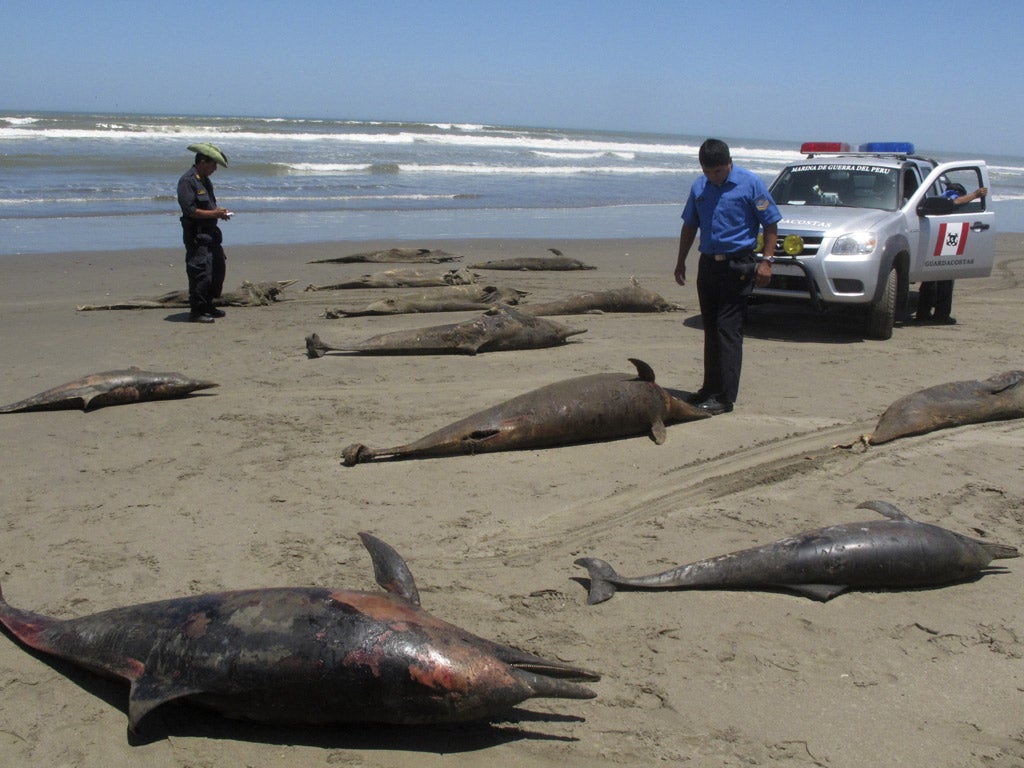
Your support helps us to tell the story
From reproductive rights to climate change to Big Tech, The Independent is on the ground when the story is developing. Whether it's investigating the financials of Elon Musk's pro-Trump PAC or producing our latest documentary, 'The A Word', which shines a light on the American women fighting for reproductive rights, we know how important it is to parse out the facts from the messaging.
At such a critical moment in US history, we need reporters on the ground. Your donation allows us to keep sending journalists to speak to both sides of the story.
The Independent is trusted by Americans across the entire political spectrum. And unlike many other quality news outlets, we choose not to lock Americans out of our reporting and analysis with paywalls. We believe quality journalism should be available to everyone, paid for by those who can afford it.
Your support makes all the difference.Maritime scientists in Peru are trying to solve a mystery that has turned stretches of the country's beaches into a grim dolphin morgue.
Officials in Lima said last week that 877 carcasses have washed up, an unprecedented number, along 100 miles of the Piura and Lambayeque coast. Nearly all are bottle-nosed dolphins, many in an advanced state of decomposition.
A possible explanation for the mass fatalities is underwater sound waves set off by explosions during oil exploration. But Peru's Deputy Environment Minister, Gabriel Quijandria, said he thought a powerful virus was the more likely cause. "So far, it's the most probable hypothesis, and it isn't the first time it's happened. There have been cases in Peru, in Mexico, the United States," he said. More should be known by the end of this week, when it is hoped the first results of testing on the remains will be released.
Suggestions that seismic shock waves are responsible will sound alarm bells among environmentalists. Last week, Carlos Yaipen-Llanos, who leads Orca, the international animal welfare organisation that focuses on whales and dolphins, said that some of the dolphins have broken bones in their ears and collapsed organs, which would be consistent with sound-wave damage.
Exploration in the area has been carried by a Houston-based oil company, BPZ, which uses underwater explosions to test for evidence of oil reserves. Mr Yaipen-Llanos says that some of the dolphins had bubbles and blood in their sinuses, which could indicate rapid ascent in panic, resulting in the bends.
However, Mr Quijandria noted that the carcasses began washing up in January, before recent rounds of seismic tests.
Join our commenting forum
Join thought-provoking conversations, follow other Independent readers and see their replies
Comments